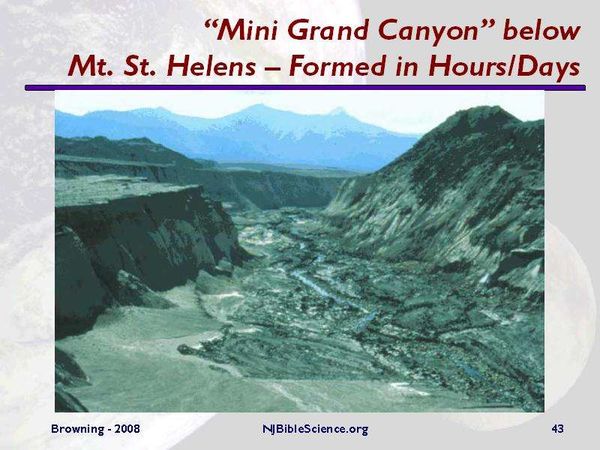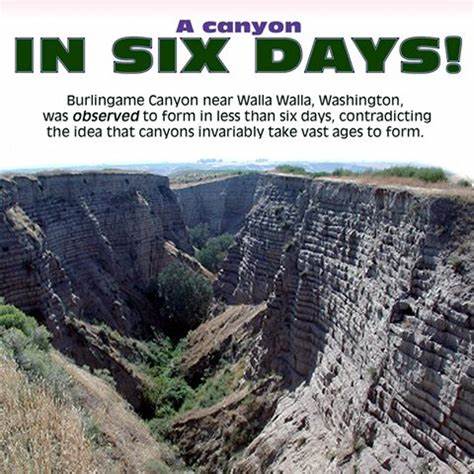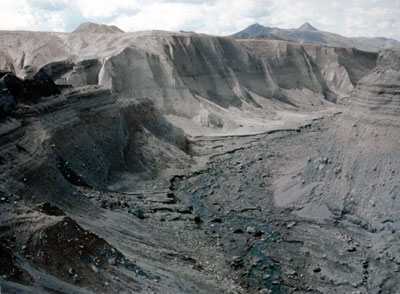G****l W*****g Is The Biggest Fraud In History
Mar 21, 2019 16:28:58 #
Kraken wrote:
They will only read what they agree with. 

Yep !!!
A Barry's Bay guy is driving down a road in Barry's Bay.
A sign in front of a restaurant reads:
HAPPY HOUR SPECIAL
Lobster Tail and Beer
'Lord tunderin' jaysus' he says to himself,
'me 3 favourite tings!'
This leftie believe it also.
Mar 21, 2019 18:59:53 #
BigWahoo wrote:
"A new NASA-led study has determined that an ... (show quote)
But then another NASA Glaciologist says that Antarctic ice is increasing in size.
https://wattsupwiththat.com/2018/06/15/nasa-glaciologist-jay-zwally-puts-the-hammer-down-antarctica-is-gaining-ice/
It seems that measuring the total ice mass of Antarctica is not so easy. They use satellites that measure gravity over the South Pole to determine whether or not there is more or less ice. The difference in gravity pull between the massively dense Earth below and the tiny variations of ice above is so minute, that it is not a particularly accurate way to measure. Besides, the Earth below the Mantle is constantly churning its magma around creating different gravitational nuances. What is accepted is that the extent of Sea Ice around Antarctica is at its widest total area ever measured so far. This does not necessarily mean that there is more total ice when you count the Sea and Land together.
As far as melting or receding glaciers, many scientists make claims, but it is an almost impossible task to measure the thousands of glaciers on Earth and their total mass increase or reduction, so there really is no officially accepted measurement anyone can point to.
Mar 21, 2019 20:24:39 #
EyeSawYou wrote:
Actually the Grand Canyon was most likely created by action(s) of glacial melting which created a massive lake. The Colorado river was the result of the Grand Canyon not the cause of the Grand Canyon. How in the hell could the Colorado River carve out a canyon that is 18 miles at its widest point? Evidence now suggest a massive local flood likely caused the Grand Canyon. But, the debate is still ongoing.
Okay, so you don't believe me. I've got an experiment for you that will help support or disprove my theory. Tomorrow morning I want you to take a glass of water and pour it onto your driveway. I want you to then wait 15 seconds and pour another. You need to keep this up 24 hours a day, 7 days a week for the next six million years.
When you're finished get back to me and let me know how your driveway looks.
Mar 21, 2019 20:57:53 #
LWW
Loc: Banana Republic of America
Frank T wrote:
Okay, so you don't believe me. I've got an experiment for you that will help support or disprove my theory. Tomorrow morning I want you to take a glass of water and pour it onto your driveway. I want you to then wait 15 seconds and pour another. You need to keep this up 24 hours a day, 7 days a week for the next six million years.
When you're finished get back to me and let me know how your driveway looks.
When you're finished get back to me and let me know how your driveway looks.
^^^^^^^^^^^^^^^^^^^^^^^
Among the silliest things ever posted.
Mar 21, 2019 21:38:03 #
Frank T wrote:
Okay, so you don't believe me. I've got an experiment for you that will help support or disprove my theory. Tomorrow morning I want you to take a glass of water and pour it onto your driveway. I want you to then wait 15 seconds and pour another. You need to keep this up 24 hours a day, 7 days a week for the next six million years.
When you're finished get back to me and let me know how your driveway looks.
When you're finished get back to me and let me know how your driveway looks.
Well let us see......
See the stream in this canyon, the stream did NOT create the canyon.

See the stream in this canyon, the stream did NOT create the canyon.

Created in days.. See the stream in this canyon, the stream did NOT create the canyon.

Mar 21, 2019 22:30:06 #
LWW
Loc: Banana Republic of America
EyeSawYou wrote:
Well let us see......
Now you went and introduced science to the dumb masses.
Mar 21, 2019 22:53:04 #
Mar 21, 2019 23:02:24 #
Frank T wrote:
Okay, so you don't believe me. I've got an experiment for you that will help support or disprove my theory. Tomorrow morning I want you to take a glass of water and pour it onto your driveway. I want you to then wait 15 seconds and pour another. You need to keep this up 24 hours a day, 7 days a week for the next six million years.
When you're finished get back to me and let me know how your driveway looks.
When you're finished get back to me and let me know how your driveway looks.
Here's another one for you to ponder! This was published by phys.org
'Geologist investigates canyon carved in just three days in Texas flood'
In the summer of 2002, a week of heavy rains in Central Texas caused Canyon Lake -- the reservoir of the Canyon Dam -- to flood over its spillway and down the Guadalupe River Valley in a planned diversion to save the dam from catastrophic failure. The flood, which continued for six weeks, stripped the valley of mesquite, oak trees, and soil; destroyed a bridge; and plucked meter-wide boulders from the ground. And, in a remarkable demonstration of the power of raging waters, the flood excavated a 2.2-kilometer-long, 7-meter-deep canyon in the bedrock.
According to a new analysis of the flood and its aftermath—performed by Michael Lamb, assistant professor of geology at the California Institute of Technology, and Mark Fonstad of Texas State University—the canyon formed in just three days.
A paper about the research appears in the June 20 advance online edition of the journal Nature Geoscience.
Our traditional view of deep river canyons, such as the Grand Canyon, is that they are carved slowly, as the regular flow and occasionally moderate rushing of rivers erodes rock over periods of millions of years.
Such is not always the case, however. "We know that some big canyons have been cut by large catastrophic flood events during Earth's history," Lamb says.
Unfortunately, these catastrophic megafloods -- which also may have chiseled out spectacular canyons on Mars—generally leave few telltale signs to distinguish them from slower events. "There are very few modern examples of megafloods," Lamb says, "and these events are not normally witnessed, so the process by which such erosion happens is not well understood." Nevertheless, he adds, "the evidence that is left behind, like boulders and streamlined sediment islands, suggests the presence of fast water"—although it reveals nothing about the time frame over which the water flowed.
This is why the Canyon Lake flood is so significant. "Here, we know that all of the erosion occurred during the flood," Lamb says. "Flood waters flowed for several weeks, but the highest discharge—during which the bulk of the erosion took place—was over a period of just three days."
Lamb and Fonstad reached this conclusion using aerial photographs of the region taken both before and after the flood, along with field measurements of the topography of the region and measurements of the flood discharge. Then they applied an empirical model of the sediment-carrying capacity of the flood—that is, the amount of soil, rocks, boulders, and other debris carried by the flood to produce the canyon.
The analysis revealed that the rate of the canyon erosion was so rapid that it was limited only by the amount of sediment the floodwaters could carry. This is in contrast to models normally applied to rivers where the erosion is limited by the rate at which the underlying rock breaks and is abraded.
The researchers argue that the rate of erosion was rapid because the flood was able to pop out and cart away massive boulders (a process called "plucking")—producing several 10- to 12-meter-high waterfalls that propagated upstream toward the dam, along with channels and terraces. The flood was able to pluck these boulders because the bedrock below the soil surface of the valley was already fractured and broken.
The abrasion of rock by sediment-loaded waters—while less significant in terms of the overall formation of the canyon—produced other features, like sculpted walls, plunge pools at the bases of the waterfalls, and teardrop-shaped sediment islands. The sediment islands are particularly significant, Lamb says, because "these are features we see on Earth and on Mars in areas where we think large flow events have occurred. It's nice that here we're seeing some of the same features that we've interpreted elsewhere as evidence of large flow events."
The results, Lamb says, offer useful insight into ancient megafloods, both on Earth and on Mars, and the deep canyons they left behind. "We're trying to build models of erosion rates so we can go to places like Mars and make quantitative reconstructions of how much water was there, how long it lasted, and how quickly it moved," Lamb says. In addition, he says, "this is one of a few places where models for canyon formation can be tested because we know the flood conditions under which this canyon formed."
https://phys.org/news/2010-06-geologist-canyon-days-texas.html#jCp
Mar 21, 2019 23:48:44 #
LWW wrote:
Everybody knows the Colorado river was created when a l*****t dropped a quarter down a gopher hole.

Mar 22, 2019 03:29:35 #
EyeSawYou wrote:
Here's another one for you to ponder! This was pub... (show quote)
This stuff about instant canyon formation is fascinating! Never heard about it before.


Mar 22, 2019 08:26:10 #
Mar 22, 2019 09:05:57 #
LWW wrote:
I thought you might like that.
He likes it because that qualifies as science to him.
Mar 22, 2019 09:07:57 #
I'll have to read this but it still doesn't support the theory that the grand canyon and the Chesapeake bay were carved out by glaciers.
Mar 22, 2019 09:23:46 #
Mar 22, 2019 09:24:27 #
Frank T wrote:
I'll have to read this but it still doesn't support the theory that the grand canyon and the Chesapeake bay were carved out by glaciers.
Correct. That was man made g****l w*****g.
If you want to reply, then register here. Registration is free and your account is created instantly, so you can post right away.




